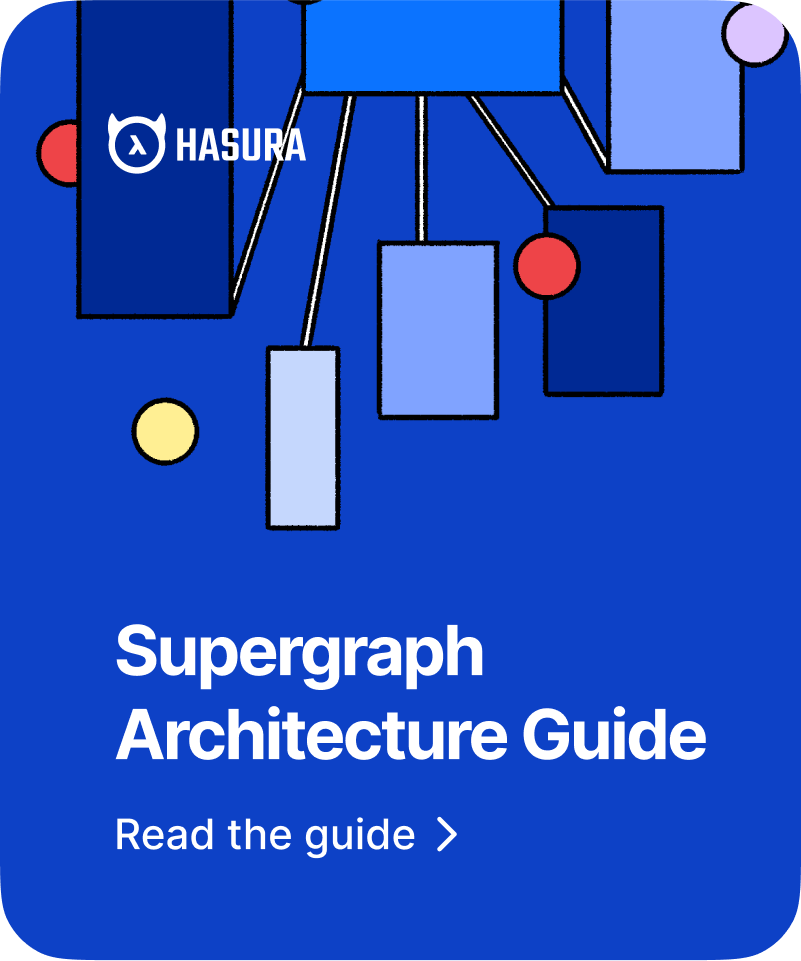Why Hasura is a must-have in the tech stack for this engineering firm


- Cut 3 months off from Tactable’s 8-month project timeline
- Bulletproof performance through Hasura’s reliability and scalability for handling complex tasks
- Empowering clients: modern and efficient solutions for managing and accessing data
Hasura as part of the core toolset
Many users are attracted to Hasura for its powerful GraphQL capabilities, but Toronto-based engineering firm Tactable was first drawn to the overall value Hasura brings to backend development, and they’ve leveraged Hasura to deliver successful projects for major brands, including Shopify, Rakuten, and Walmart.
As a boutique agency offering cloud, database, and AI engineering services, it’s an all-hands-on-deck operation at Tactable. The firm was an early Hasura adopter and they’ve had so much success with their implementations using Hasura that it has become part of the agency’s core tool set, and the go-to for any project where there is an API or CRUD requirement.
Tactable Co-Founder and CTO Geoff Strickland described Hasura as an “instant backend-as-a-service” and said leaning on Hasura made a big impact on Tactable. His team leverages Hasura for various tasks, including managing database migrations, seeding large databases, changing schema, and efficiently creating REST endpoints. Strickland emphasized the value of Hasura in streamlining development processes by eliminating the need to build controllers for every backend feature.
“We don't have to do any work back there, we can just connect to it,” he said. “I don't have to worry about the unit testing of the backend. We shaved off so much time on writing tests for our controllers and things like that.”
Solid RBAC and scalability to connect big, and growing, data sets
Leveraging its connections with client and fellow Canadian firm Shopify, Tactable got a contract to do an integration for Japan’s largest e-commerce firm, Rakuten. Building a framework that could scale over time while still being easily managed was a core project goal. At the time, Strickland had been experimenting with an early version of Hasura and was confident that using it on the Rakuten project would add a lot of value.
“It proved to be very solid,” Strickland said. “It has been running for five years with no issues whatsoever.” He went on to highlight the benefits of Hasura’s role-based access control (RBAC) for this project with an ever-growing database.
“Having column-level access and being able to make specific, fine-grained rules as to what data people could access, that was big for us,” he said.
Walmart, Japan, and Hasura
The Rakuten project was considered a huge success by all parties. So later, when Rakuten was starting a new project with Walmart, they returned to Tactable for engineering. As Strickland described it, U.S.-based Walmart wanted to sell its products in Japan, but did not want to deal with building out storefront shipping, and everything else involved in such an endeavor. So Walmart strategically partnered with Rakuten to create a Rakuten store that sells Walmart products in Japan.
Tactable engineered a backend system that allows users to query the millions of products in the Walmart system and import select goods into the Rakuten marketplace. The application uses a complex worker process that synchronizes all orders that come in through Rakuten and submits them as orders on Walmart. The Rakuten Walmart store syncs half a million products daily and processes thousands of orders each month, Strickland said. Shipping is handled by integrating the app with a third-party system for a company that ships the product out of a Walmart distribution center in the Bay Area. The product then gets delivered to a local shipping firm in Japan for last-mile delivery.
“Every product that's purchased through Walmart in Japan is going through our system, which is ultimately powered by Hasura,” Strickland said.
Building a bulletproof solution with Hasura
When the Tactable team was engineering the product, they were given nearly carte blanche to design the system as they saw fit. The only restriction was that the product could not be hosted on AWS, due to Rakuten and Amazon being direct competitors.
“So we built it out on Google Cloud and heavily leveraged Hasura. It’s been running for years, and it's been, honestly, pretty bulletproof,” Strickland said. “We're very happy with it.”
He went on to discuss how Tactable evolved to adopt GraphQL. The first time he used Hasura, its GraphQL functionality was not a consideration.
“GraphQL was a fringe benefit to me. I cared more about not having to write unit tests and having instant data access,” Strickland said. “And since we've been using Hasura, our frontend team has been very appreciative of being able to structure the queries however they want. Moving forward, we’ve had another couple of large clients that we've used Hasura for in the exact same way. If there's a requirement to have an API or some CRUD operations, which 90% of the time there is, we’re using Hasura because it saves us time.”
Saving time and resources with Hasura
Time saved is a major reason why Hasura continues to add value for Tactable. Because speed is of the essence, how fast the team can deliver is sometimes the difference between signing a deal or not. Strickland said that Hasura has easily allowed them to shave two to three months off their project timelines.
“From that angle, Hasura has been transformative for our company. It's allowed us to focus on the problems that we're trying to solve, instead of writing basic REST controllers. As people, we've moved past that. I don't write login authentication logic anymore. I offload that onto something like Auth0 or Okta. Same thing with data access. I feel like this is where we are now, and Hasura allows us to move really, really fast.”
Waking up from the data access nightmare
As Strickland sees it from his seat at Tactable, there is an emergent need for Hasura to be in the tech stack of any organization that relies on databases.
Because Hasura can sit on top of multiple, disparate databases, it can solve the all-too-common problem of teams being siloed away from the enterprise data they need.
Data access is nightmarish for so many teams, especially at large organizations. When someone needs access to something, they have to put in a request, which might require someone else to build an endpoint to get access. These requests are often not a top priority.
The future is connected to Hasura
Strickland sees a world where Hasura fits into the tech stack of the enterprise, sitting across multiple databases. Using role-based permissions, Hasura can grant the correct people access to the correct data without a need to build custom endpoints every time someone needs to see something new.
“I imagine that would be a huge benefit for a lot of organizations that are trying to modernize their tech stack or just move more quickly,” he said, adding that he regularly sees companies with numerous dashboards that are all disconnected from one another. “If they just had a single way to access their data, I think that would be huge.”
Given how big it has been for Tactable, Strickland is bullish on Hasura being the solution that many organizations don’t even realize they need, yet.
“I love Hasura,” he said. “Everyone that I've shown it to has been like, ‘Holy cow, why don't we know about this!? This makes life so much easier.’"





